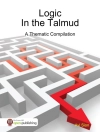Goes to the heart of contemporary arguments about the ‘primitive’ and the ‘modern’ minds, and draws new social, anthropological, and ethnographic conclusions about the nature of ancient societies.
How did ancient peoples—those living before written records—think? Were their thinking patterns fundamentally different from ours today? Researchers over the years have certainly believed so. Along with the Aborigines of Australia, the indigenous San people of southern Africa—among the last hunter-gatherer societies on Earth—became iconic representatives of all our distant ancestors and were viewed as either irrational fantasists or childlike, highly spiritual conservationists.Since the 1960s a new wave of research among the San and their world-famous rock art has overturned these misconceived ideas. Here, the great authority David Lewis-Williams and his colleague Sam Challis reveal how analysis of the rock paintings and engravings can be made to yield vital insights into San beliefs and ways of thought. This is possible because we possess comprehensive transcriptions, made in the nineteenth century, of interviews with San informants who were shown copies of the art and gave their interpretations of it. Using the analogy of the Rosetta Stone, the authors move back and forth between these San texts and the rock art, teasing out the subtle meanings behind both.
The picture that emerges is very different from past analysis: this art is not a naïve narrative of daily life but rather is imbued with power and religious depth.
Об авторе
Sam Challis is a rock art specialist at the Rock Art Research Institute, University of the Witwatersrand, Johannesburg.
Купите эту электронную книгу и получите еще одну БЕСПЛАТНО!
язык английский ● Формат EPUB ● страницы 224 ● ISBN 9780500770467 ● Размер файла 20.8 MB ● издатель Thames & Hudson ● Страна US ● опубликованный 2011 ● Загружаемые 24 месяцы ● валюта EUR ● Код товара 7469475 ● Защита от копирования Adobe DRM
Требуется устройство для чтения электронных книг с поддержкой DRM












